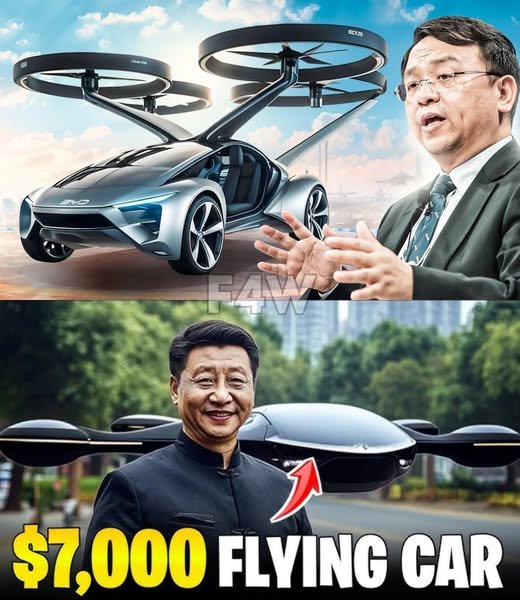In a stunning announcement that has sent shockwaves through the automotive and aviation industries, BYD, the Chinese electric vehicle giant, has unveiled its first flying car, priced at an astonishingly low $7,000. This groundbreaking innovation promises to redefine personal transportation, challenging traditional norms and sparking heated debates about the future of mobility. With the launch of this flying car, the CEO of BYD has positioned the company at the forefront of a transportation revolution.
A Leap into the Future
The BYD flying car represents a significant leap forward in technology, combining advanced engineering with eco-friendly electric propulsion. As urban areas become increasingly congested, the idea of flying over traffic is becoming more appealing. This vehicle is not just a novelty; it could provide a viable solution to one of the most pressing issues facing modern cities: traffic congestion and pollution.
What sets this flying car apart is its affordability. At just $7,000, it opens the doors to personal air travel for a broader audience. Historically, flying cars have been associated with exorbitant prices, making them accessible only to the wealthy elite. BYD’s approach disrupts this notion, positioning the flying car as a potential everyday vehicle. However, the low price tag raises questions about safety, quality, and the implications for the aviation industry.
Safety Concerns and Regulatory Challenges
While the excitement surrounding the BYD flying car is palpable, safety concerns loom large. The transition from ground vehicles to aerial ones is fraught with challenges. How will the company ensure that its flying car meets stringent safety standards? The aviation industry is heavily regulated, and integrating flying vehicles into existing airspace will require new regulatory frameworks. Critics argue that rushing this technology to market could lead to accidents and fatalities.
Moreover, there are ethical considerations. Will the soaring popularity of flying cars exacerbate social inequalities? If personal air travel becomes commonplace, will it create a divide between those who can afford it and those who cannot? The potential for increased accidents and airspace congestion raises questions about whether society is ready for this leap into the skies.
Environmental Impact and Sustainability
BYD has built its reputation on producing environmentally friendly electric vehicles, and the flying car is no exception. The company touts its commitment to sustainability, claiming that the vehicle will produce zero emissions. However, skeptics question the overall environmental impact of flying cars. The energy required for vertical takeoff and landing (VTOL) could offset the benefits of electric propulsion. As we seek solutions to combat climate change, it’s crucial to examine whether this new mode of transportation aligns with global sustainability goals.
The Future of Transportation
The unveiling of BYD’s flying car has ignited discussions about the future of transportation. Are we on the brink of a new era where personal air travel becomes the norm? If successful, this flying car could usher in a transformative shift in how we navigate our cities. Yet, the challenges it faces are significant.
As urban planners and policymakers grapple with the implications of flying cars, the question remains: is society ready for this change? The excitement surrounding BYD’s innovation is tempered by a recognition of the complexities involved in integrating flying vehicles into daily life.
Conclusion
BYD’s $7,000 flying car is a bold step into the future, challenging conventional ideas about transportation. While it offers the promise of reducing traffic and emissions, it also raises pressing questions about safety, regulatory challenges, and societal implications. As we stand on the precipice of this new frontier, the success of this flying car will depend not only on technological advancements but also on our ability to navigate the ethical and practical challenges that come with it. The future of transportation may be in the air, but whether we are ready to embrace it remains to be seen.



